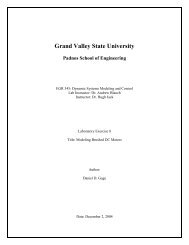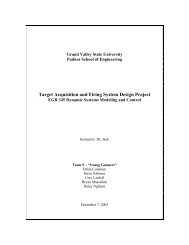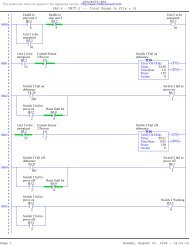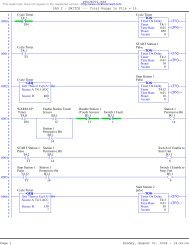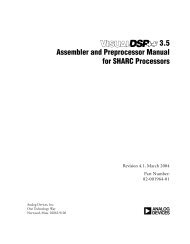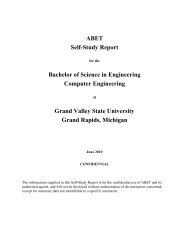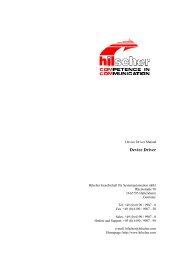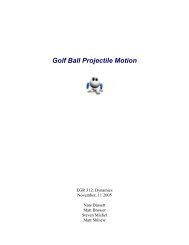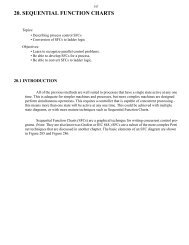Scilab Bag Of Tricks - Claymore
Scilab Bag Of Tricks - Claymore
Scilab Bag Of Tricks - Claymore
You also want an ePaper? Increase the reach of your titles
YUMPU automatically turns print PDFs into web optimized ePapers that Google loves.
Chapter 4. Unknown Spots<br />
Lisp as a (functional) language which employs pure prefix syntax all functions and operators are<br />
written before all arguments.<br />
(+ 3.9 54.0 -4.5 74.5 -57 -56)<br />
(setq x (list "a" -1 (- 3 10)))<br />
(length x)<br />
The same expressions look more or less differently in <strong>Scilab</strong>:<br />
3.9 + 54.0 + (-4.5) + 74.5 + (-57) + (-56)<br />
sum( [3.9 54.0 -4.5 74.5 -57 -56] ) – alternative to previous line<br />
x = list("a", -1, (3 - 10))<br />
length(x)<br />
As becomes clear in the above example, operators are specially written functions, but otherwise<br />
behave like ordinary functions.<br />
Overloading has been hyped since to advent of C++. A closer look reveals that even Fortran-77<br />
endows certain intrinsics with an overloaded syntax. What the heck is overloading? To overload a<br />
symbol means assigning another meaning to it, augmenting the existing meaning(s). Typically, the<br />
symbol is a function name and the additional meaning is an additional function definition.<br />
How can the language decide which definition to take? That depends on the language. The most<br />
common scheme to determine which function definition to trigger is the analysis of the actual<br />
function arguments. Fortran-77 provides so-called generic functions, sin is one example, which can<br />
be called with arguments of several types and the compiler selects the routine that matches that type.<br />
program f77ovl<br />
implicit none<br />
real xr, s1<br />
double precision xd, s2<br />
complex xc, s3<br />
* floating point literals default to real*4 in f77<br />
xr = 1.0<br />
s1 = sin(xr) – compiler selects single precision routine<br />
xd = 1.0d0<br />
s2 = sin(xd) – compiler selects double precision routine<br />
xc = (1.0, 0.0)<br />
s3 = sin(xc) – compiler selects complex routine<br />
* alternative using explicit call<br />
s2 = dsin(xd) – user demands double precision routine<br />
s3 = csin(xc) – user demands complex routine<br />
end<br />
38



